Great family days in: how to keep kids busy (and parents sane) in lockdown
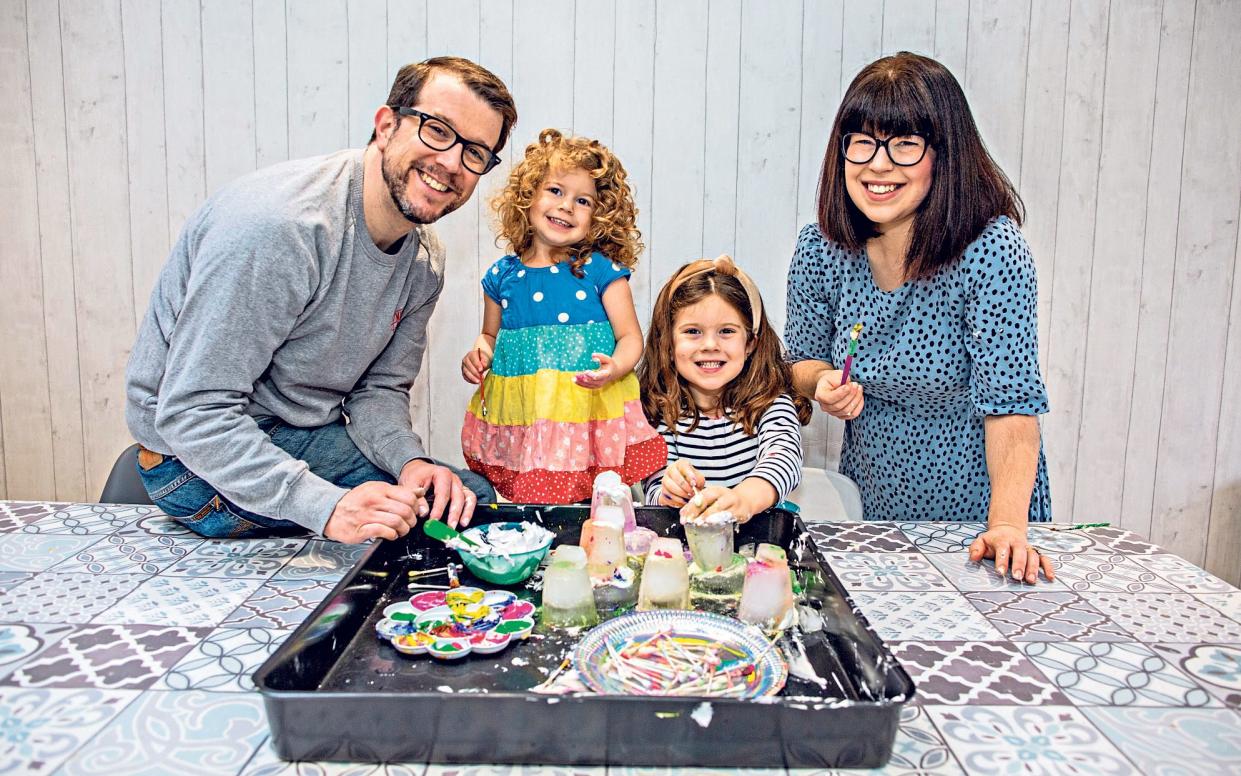
Entertaining eight-year-old twins and a three-year old boy is a daunting challenge at the best of times. During lockdown, it all gets much harder.
Early one recent wet Sunday I had the day stretching out in front of me, and in a fit of parental wholesomeness (and desperation) I decided to get the paints out to paint Van Gogh-inspired abstract winter landscapes using potato prints.
It took me half-an-hour to fashion potato prints and cover the floor and dining table in newspaper – while they watched TV. I had high hopes that the whole morning would be filled. But, just fifteen minutes after we started there was paint on the walls and little fingers glued together, at which point they lost interest and I put on just one more short programme while I tidied up.
Overall, they had more screen than activity time and I spent an hour tidying up. It was still only 9.30am. Sound familiar?
This year, as the nation goes in and out of lockdown, parents need a bank of foolproof and low-maintenance ideas for indoor activities. If you ran out of those a few months ago, here is some good news: history teacher and first-time author Claire Balkind has come up with just that.
Great Family Days In, published this autumn, has more than 75 ideas for rainy days, school holidays and lockdowns. It’s a recipe book of games, crafts and challenges, and each one has been tried and tested by Balkind and her two little girls, five-year-old Maisie and Georgie, who is two.
Activities range from making glow-in-the-dark dreamcatchers to building the ultimate marble run. There’s a guide on indoor camping and a section detailing how to create your own village fete. For the busier kids (and less house-proud parents), I recommend ice hockey with mops or living-room sports day.
The book came about after Balkind, who teaches at a secondary school in north London, started sharing some ideas with friends on social media on how to occupy the children after the schools had shut in March.
“I was panicking about what to do with my kids as I’m a secondary schoolteacher and spend most of my time with sixth-formers. I thought I would be ill-equipped,” says Balkind, who created a Facebook page called Family Lockdown Tips & Ideas.
The enthusiastic response from other parents took her by surprise. “Over the first weekend the number of members shot up to 20,000 and I was thrown into this whirlwind,” she says.
Parents started posting mindfulness tips, videos of yoga and exercise routines to keep active while staying indoors, as well as advice about age-appropriate gaming and links to free educational activities.
It was too much for one person to oversee and so Balkind asked for help and accumulated a team of volunteers to help manage and moderate the page. Every post has to be approved before appearing and one question can generate over 1,000 responses.
“We don’t share any content that is scary, Covid-related or promotional. We also make sure we don’t inadvertently recommend anything that encourages unsafe behaviour like kids sliding down stairs,” Balkind explains.
The group now has more than 1.1 million followers and is in the top 25 Facebook pages by size across the world. Balkind – whose Instagram handle is @thewhatnowmum – has also won a Points of Light Award from the Prime Minister.
“We have really high engagement because at a time when people couldn’t be together physically they came together virtually. A supportive community formed that provided positive, practical help,” she explains. Balkind’s go-to activities include Frozen Palace Messy Play, Hubble Bubble Potions and Flashlight Aquarium.
So, do other children and their parents give Claire’s book a big tick? Two Telegraph families trial the activities and mark them out of five.
Ice-Cream Parlour Play Dough
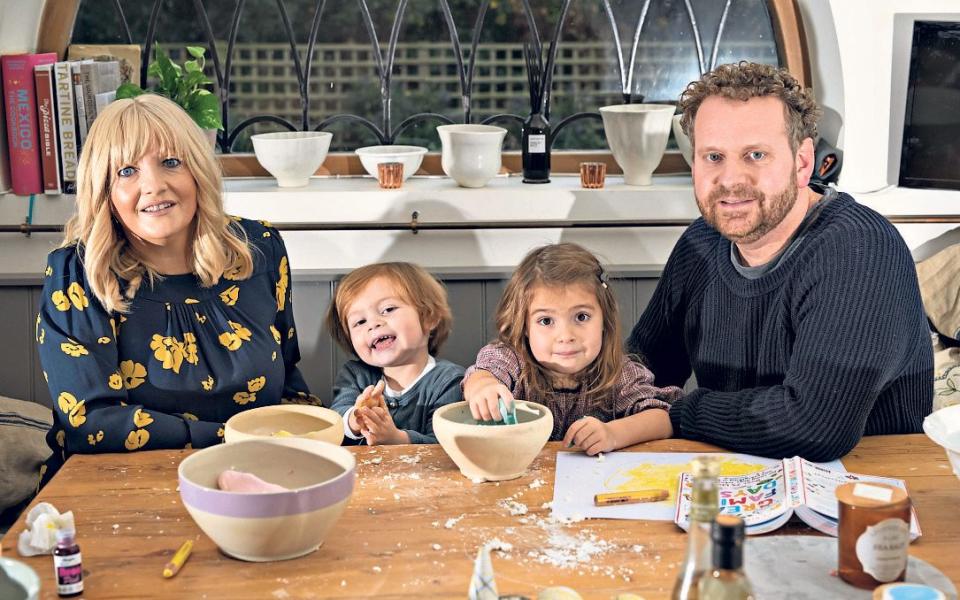
Joe and Mandy Knight and their two children Winnie (six) and Otto (three), based in Hertford, have self-isolated for most of the year. As a child Mandy had cancer of the kidney and needed dialysis. She is now fit and healthy having received a transplant from her mum as a teenager but it’s forced the family to shield during the pandemic.
With her business partner Rosie, Mandy has started children’s toys and gifts e-tailer Roo and Moo, with some proceeds going to Kidney Research UK.
“It’s been a very busy nine months but I’m now looking forward to working our way through the rest of Claire’s book, as we’re likely to be spending a lot of time at home this winter,” says Mandy.
A baker and caterer, the Ice Cream Parlour Play Dough activity caught her eye and she trialled it with Winnie and Otto.
What you need
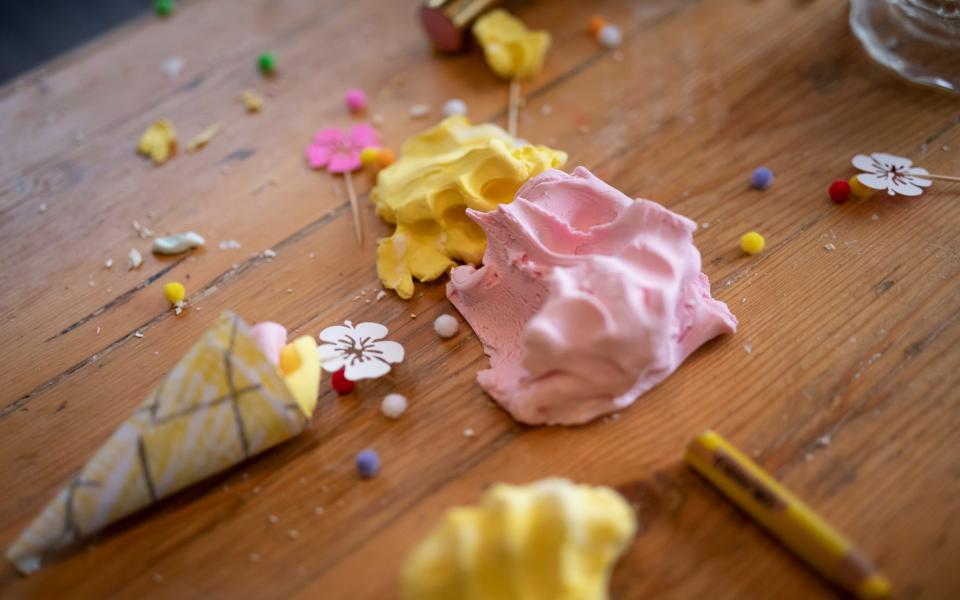
500ml hair conditioner – the cheaper the better and with a fruit smell
700g cornflour
Food colouring
Real ice cream cones, or card to make pretend versions
Decorations: buttons, sequins, real sprinkles, beads, stickers, cotton wool (for marshmallows), pom-poms, foil scrunched up into balls.
What to do (a condensed version)
Pour the cornflour in a large bowl and make sure there aren’t any lumps. Add about two thirds of the conditioner until it’s creamy and not too sticky.
Divide the dough into three bowls.
Add a drop of food colouring to each.
On a tray, lay out your ice cream accessories.
Give each child an ice-cream scoop and a cone or bowl to add the toppings to serve to their toys and each other.
Marks out of 5
“The children loved adding all the colours and sprinkles”, says Mandy.
Ease: 4/5
Fun factor: 5/5
Attention-gripping: 5/5
Shooting Vinegar Rockets

Joe chose a science experiment. By repurposing a plastic bottle and digging out a few store-cupboard staples you can make a vinegar-powered rocket to be launched in the garden. But use freshly opened vinegar, as old vinegar can lose its acidity and the experiment may not work as well.
What you need
An empty plastic bottle (500ml or 1 litre)
A bottle of white vinegar
1 or 2 tablespoons of bicarbonate of soda
A cork that will fit in the bottle neck
Paper for decoration
Kitchen roll
Sticky tape
3 pencils
What to do
With your bottle upside down, use sticky tape to attach three pencils to the sides, evenly spaced out.
Decorate the bottle with rocket fins at the bottom and a paper cone on the top.
Turn the bottle upright and pour in the vinegar until it is a quarter full. Take the cork and make sure it fits into the bottle.
Now take the bicarbonate of soda and measure out one tablespoon for a 500ml bottle or two tablespoons for a one-litre bottle on to a piece of kitchen roll.
Find some level ground outside and make sure you have space to step back 12ft when you launch the rocket into the air.
The next bit must be completed by an adult. Turn the bottle so the neck is facing upward. Pull out the cork and push in the wrapped up bicarbonate of soda. Now replace the cork. Turn the bottle so the neck-side faces down and place it on the ground.
Your vinegar bottle should lift off into the sky.
Marks out of 5
“I was surprised how effective it was and Otto found the build-up to the launch really exciting too,” says Joe, an investment adviser.
Ease: 3/5
Fun factor: 5/5
Attention-gripping: 4/5
Magical Fairy Garden
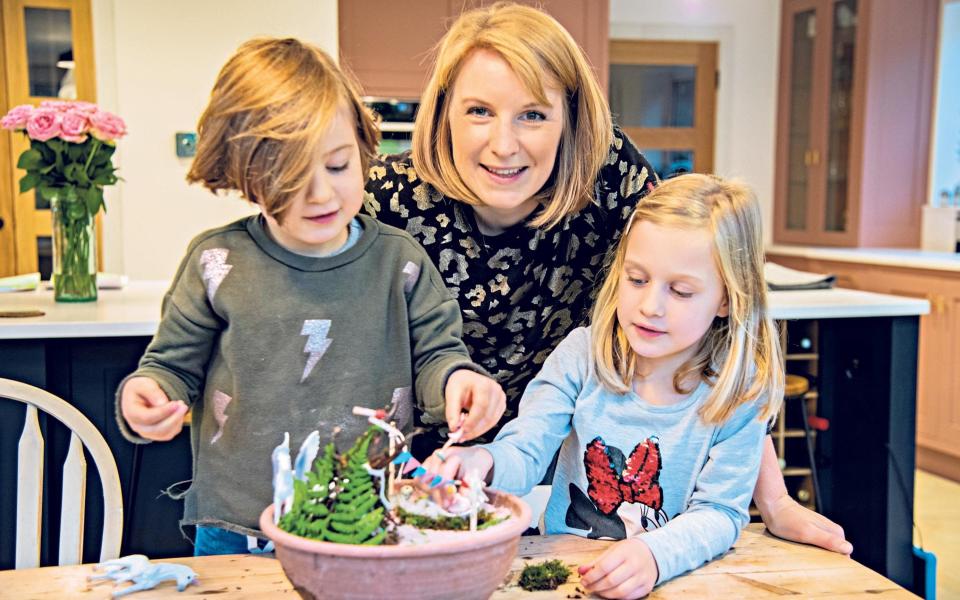
Surrey resident Victoria Page, her husband Gavin and their two children Amelie (seven) and Clara (five) reviewed the book on a wet afternoon.
Victoria, a sustainability consultant who runs an anti-waste charity called Love Haslemere Hate Waste, immediately looked for activities using natural materials and decided on the Magical Fairy Garden.
What you need
A container such as a bucket or plant pot
Soil or sand
Greenery such as moss or grass
Stones or pebbles
Miniature figures
What to do
Fill the container with soil or sand.
Use the twigs and stones to create a fairy shelter which you can paint of decorate.
Now create the garden, e.g. build paths of stones or ponds made from yogurt pots.
Marks out of 5
“The kids were engaged for hours, from going on a walk to collect moss, grass and sticks to building it and then playing with it too,” says Victoria. “It was interesting to compare how I envisaged using a certain material versus the girls. They used the ferns to clad the house where I would have used them to carpet the floor.”
Ease: 4/5
Fun factor: 5/5
Attention-gripping: 5/5
Creative ideas for teens
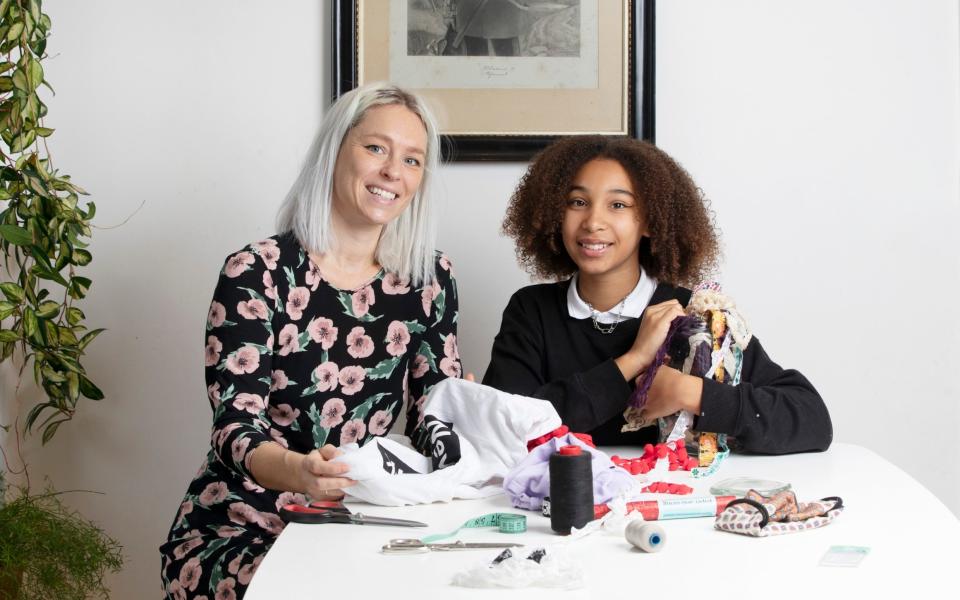
There are some activities in Great Family Days In that could appeal to competitive teenagers. The chapter entitled “Let’s Get Physical” includes Home-made Sports Day, Any Weather Mini Golf and Spin-the-bottle Twister – which is far more appropriate than it sounds. There is also The Big Family Quiz for all ages.
These may miss the mark, however, for some teens. For those parents battling to reduce screen time, seamstress, entrepreneur, and mother-of-one Charlotte Denn has an answer.
Charlotte has based her career on aimless afternoons as a teenager cutting off her jeans into shorts and turning T-shirts into crop tops. She runs a clothing label for adults and children called What Mother Made in Hackney and creative studio Make and Mend, which featured on the Channel 4 series This Old Thing hosted by Dawn O’Porter.
She has whiled the away the hours in lockdown with her 14-year-old daughter Madison by upcycling her wardrobe. “Experimenting with clothes is really popular with teenagers at the moment. Environmental factors are close to their hearts and there is no stigma in buying second-hand clothes,” Charlotte explains. She cites Depop, a fashion marketplace app where teens buy and sell preloved garments.
“I also think the feeling of creating something wearable from something discarded gives a sense of pride and achievement,” she adds.
Here are some of Charlotte and Madison’s, favourite ways of fashioning old clothes into new.
Try some tie-dye
Nineties fashion is back in. Order a tie-dying kit online and choose an old T-shirt or jumper. Use natural fibre material (such as 100 per cent cotton), as synthetics won’t take up the dye, and make sure the garment is wet before you start.
Sew some patchwork
Make a simple tote bag stitching together patches from old jumpers and jeans. Take a couple of items of clothing of a similar weight and type of fabric and cut down the arms or trouser legs to make them flat.
Make a pattern from paper and pin it to the flat pieces of fabric then cut around them until you have lots of squares which you can sew together by hand, or by machine.
Do some gem-stoning
You can buy gem stones and a heat wand off eBay really cheaply and create a simple pattern or image. Just hold the heat wand against the top for a second for the gem to stick. Test the fabric first, as some melt under the heat.
Make your own face mask
There are lots of online tutorials and the more they love it the more likely they are to wear it.
More ideas for teenagers
The best books for teens this Christmas (recommended by Waterstones)
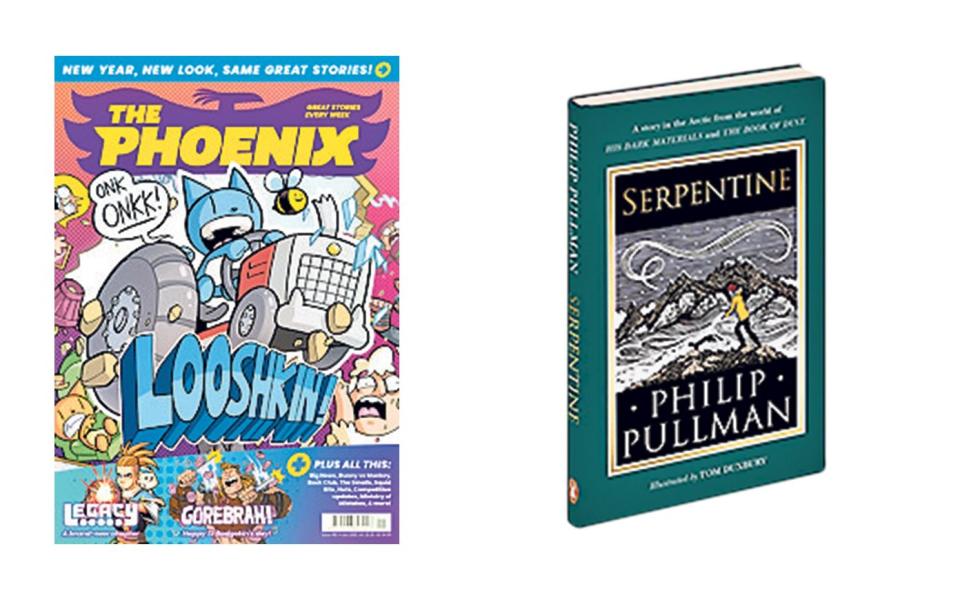
Serpentine by Philip Pullman, £7.99.
Black and British: a short essential history by David Olusoga, £6.99.
Cinderella is Dead by Kalynn Bayron, £7.99.
Midnight Sun by Stephanie Meyer, £20.
The Ballad of Songbirds and Snakes by Suzanne Collins, £18.99.
Good screen time
For teens a virtual book club is one way of combining reading with socialising. Penguin recommends a manageable number of members. If you are using Zoom or Houseparty, think about the number of faces you can get on one screen.
Work out the structure of each meeting. How much time do you want to dedicate to discussing the book? Pick a TV show such as Pride and Prejudice if you’re reading Jane Austen and all watch it for future discussion.
Become a cartoonist
Fans of The Phoenix, a weekly magazine for seven to 14-year olds, will be thrilled to learn you do not have to be a subscriber to access their skills hub, which is updated weekly with videos and instructions for how to draw everything from superheroes to monsters from Phoenix Creators.
Visit the phoenixcomic.co.uk. for more.
Read more: The best board games

